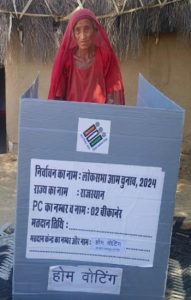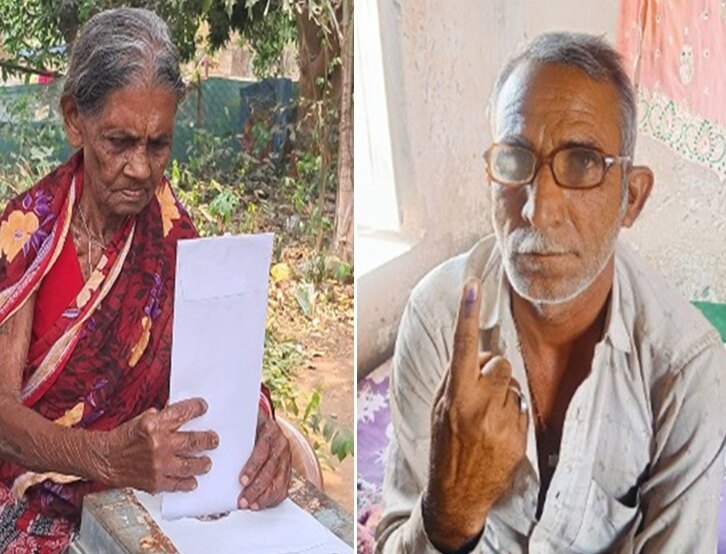In a move to ensure inclusivity in democracy’s biggest festival, the Election Commission of India (ECI) is now offering senior citizens aged 85 years or above and Persons with Disabilities the facility to vote from the comfort of their home in the Lok Sabha Elections this year.
Over 81 lakh 85+ voters and more than 90 lakh Persons with Disabilities (PwDs) voters registered across the country can avail this facility. PwDs with 40% benchmark disability are eligible for this facility. Voters in this category have already begun casting their votes for phase I and II of polling and the process is completely manual.
Voting from home takes place with involvement of a full contingent of polling staff and security personnel with secrecy of voting diligently maintained. With this, ECI has taken another step towards facilitating a more equitable and representative democracy, where every citizen’s voice matters, regardless of physical limitations or age.
Home voting piloted during Assembly Elections
Chief Election Commissioner Rajiv Kumar along with Election Commissioners Shri Gyanesh Kumar and Dr Sukhbir Singh Sandhu had announced that by giving home voting facility to elders and PwDs, it is the Election Commission’s expression of care and respect towards them and hoped that it would set an example for society to adopt it in day-to-day life. Although this initiative has been piloted in select regions during assembly elections, the Lok Sabha Elections will witness the first nationwide implementation of doorstep voting.
The Chief Election Commissioner says

“We are prepared to facilitate home voting for individuals above the age of 85. Before the nomination process, we will dispatch Form 12D to their residences to indicate their preference. If they opt for home voting, we will ensure the electoral process takes place at their doorstep. Our observation indicates that the majority of these individuals prefer to visit polling stations owing to their consistent engagement in our democratic process. However, provisions such as volunteers and wheelchairs will be available at polling booths for their convenience, Chief Election Commissioner Rajiv Kumar had mentioned during a press conference on 16th March when the dates of the 18th Lok Sabha Elections were announced.
Doorstep voting already in progress
Voters eligible for doorstep voting have already begun casting their votes for phase I and II of polling. As per an announcement made by the ECI, in Churu, Rajasthan eight PwD voters, all from the same family, exercised home voting facility. In Chhattisgarh, 87-year-old Indumati Pandey and 86-year-old Sonmati Baghel, from Bastar and Sukma tribal districts, exercised their franchise using the postal ballot at home. In Maharashtra, ECI polling teams travelled 107 kms to provide home voting facility to two elderly voters in Sironcha town in Gadchiroli district, LWE affected area.

How Doorstep Voting Facility works
The provision of home voting is a progressive measure aimed at empowering voters who encounter barriers to participating in the electoral process at the polling stations. Specifically, this facility is extended to two key demographic groups: persons with disabilities (PwDs) meeting the 40% benchmark disability criteria and senior citizens aged above 85 years.
The procedure to avail this facility is simple yet thorough. Within five days of the election notification, eligible voters must complete Form 12D and submit it to the returning officer. PwD voters submit a baseline disability certificate with their applications.
Booth Level Officer (BLO) is responsible for retrieving Form 12D from the elector’s place of residence when the required documentation has been completed. Candidates receive a list of these electors in order to maintain accountability and transparency; if they wish, they can choose a representative to supervise the process.
Following this, a dedicated team of polling officials along with security officials visits the voter’s residence to collect their votes. Crucially, voters are notified ahead of time of the planned visit, allowing them to be prepared to exercise their right to vote in a safe and comfortable manner. To further expedite the procedure and improve accessibility, voters can also receive notifications via text message/SMS about the days when their home voting facility will be active. The complete process is videographed for transparency.

